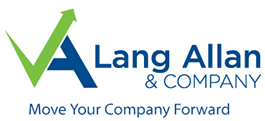
The Families First Coronavirus Response Act (H.R. 6201) is now law, and attorneys, accountants, and other professionals are poring over it. What are its main provisions, and how might it affect you?
The Society for Human Resource Management and other outlets have highlighted the following provisions:
Paid Family Leave
The law provides 12 weeks of qualifying family and medical leave at two-thirds of their salary when employees can’t work because their minor child’s school or child care service is closed due to a public health emergency. Those on the payroll for at least 30 calendar days are eligible. Benefits are capped at $200 a day (or $10,000 total) and expire at the end of the year.
Paid Sick Leave
Employers have to provide 80 hours of paid-sick-leave benefits in various scenarios, including a situation in which an employee has been ordered by the government to quarantine or isolate or has been advised by a health care provider to self-quarantine. The payment is capped at $511 a day and expires at year-end.
Covered employers that are required to offer emergency FMLA or paid sick leave are eligible for refundable tax credits. Employers with fewer than 50 workers can apply for an exemption from providing paid family and medical leave and paid sick leave if it “would jeopardize the viability of the business.” According to the SHRM, “Gig-workers and other self-employed workers will be eligible for a tax credit to cover the benefits.”
A notable exemption is companies with more than 500 employees. The thinking on Capitol Hill was that such companies are capable of providing benefits without direct government help.
Part-Time Workers
They are also covered. According to the New York Times, such employees will receive the amount they typically earn in a two-week period. The self-employed — from freelance writers to Uber drivers — “should calculate their average daily self-employment income for the year, then claim the amount they take as a tax credit (they can reduce their estimated quarterly tax payments in the meantime).”
The DOL has recently issued guidance about how the leave provisions work. Note that it goes into important details on which kinds of companies it applies to–this can get complicated.
On April 1, the DOL issued a temporary rule that, among other things, “confirmed that employees must give notice to their employers of the need to take leave and provide documentation to support paid sick leave and emergency family and medical leave,” according to the Society for Human Resource Management.
Small Business Administration
The Small Business Administration does not need to wait for new laws, however. It is already stepping up with guidance and loans, including its Economic Injury Disaster Loan Program. The SBA will work directly with state governors to provide targeted, low-interest loans to small businesses and non-profits that have been severely impacted by the pandemic.
For now, keep in mind that the legal situation can change as quickly as the health situation, and ruling and reinterpretations of laws can change suddenly, modifying the advice in this article. We’ll be keeping an eye on authoritative sources in the coming days.

Pingback: What's the Story on the Employee Retention Credit? | Lang Allan & Company CPA PC